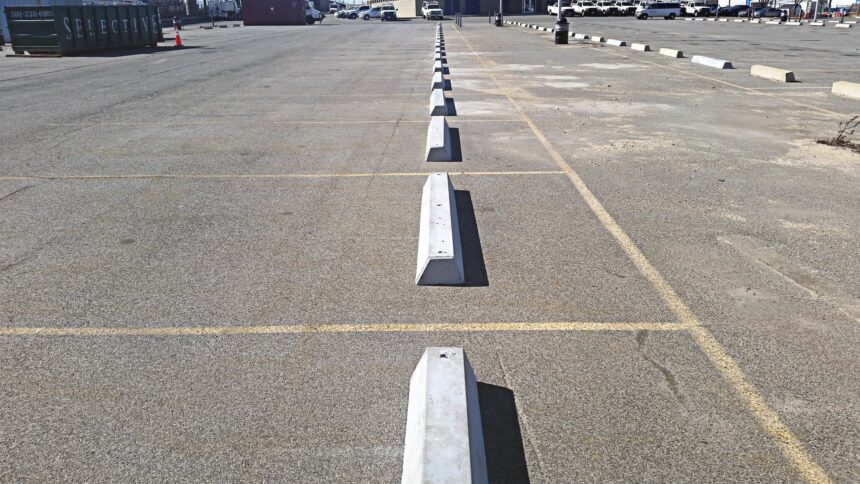When it comes to the design and management of parking lots, safety is a paramount concern. Ensuring that vehicles are parked correctly and do not encroach on pedestrian pathways or other vehicles is crucial for maintaining order and preventing accidents. One of the most effective solutions in this regard is the installation of concrete car stops. These durable barriers serve as a physical guide for drivers, indicating where to stop their vehicles and providing a buffer to protect pedestrians and property. In this guide, we will explore the importance of concrete car stops, their various types, installation procedures, and maintenance considerations.
Understanding the Importance of Concrete Car Stops
Concrete car stops play a vital role in enhancing safety within parking facilities. By providing a clear demarcation of parking spaces, these stops help to minimize the risk of collisions, both between vehicles and between vehicles and pedestrians. When drivers have a designated stopping point, they are less likely to misjudge their position, which can lead to accidents or damage to nearby structures. Moreover, concrete car stops contribute to a more organized parking environment, ensuring that vehicles are parked efficiently and consistently.
The structural integrity of concrete makes it an ideal material for car stops. Unlike plastic or rubber alternatives, concrete can withstand significant pressure and impact, making it suitable for high-traffic areas. In addition, concrete car stops are often resistant to weather conditions, ensuring that they remain effective and visually appealing over time. Their stability and durability provide a long-term solution for parking lot safety, reducing the need for frequent replacements.
Types of Concrete Car Stops
Concrete car stops come in various shapes and sizes, allowing for customization based on specific parking lot needs. The most common types include standard car stops, which are typically 6 feet long and 4 to 6 inches high. These are used in conventional parking spaces and are designed to accommodate most passenger vehicles.
In addition to standard car stops, there are also modular stops that can be linked together to create longer barriers, ideal for larger vehicles or specialized parking areas. Some facilities may opt for colored or textured concrete car stops to enhance visibility and aesthetics. These variations can include bright colors or added friction surfaces, making them more noticeable and safer for drivers and pedestrians alike.
Furthermore, there are eco-friendly options available that incorporate recycled materials into the concrete mixture. These stops not only fulfill safety requirements but also align with sustainability goals, appealing to environmentally conscious businesses. The choice of concrete car stops will depend on the specific needs of the parking facility, including the volume of traffic, types of vehicles, and aesthetic considerations.
Installation Procedures for Concrete Car Stops
The installation of concrete car stops is a straightforward process, but it requires careful planning and execution to ensure optimal effectiveness. Prior to installation, it is essential to assess the parking lot layout and determine the ideal placement for car stops. Factors such as the angle of parking spaces, traffic flow, and pedestrian pathways should be taken into account.
Once the placement is determined, the next step involves preparing the ground where the stops will be installed. This may include clearing debris, leveling the surface, and ensuring proper drainage to prevent water accumulation around the stops. After the area is prepared, the concrete car stops can be positioned. It is crucial to secure them in place using appropriate anchoring methods, which may involve drilling holes into the concrete and using rebar or expansion bolts. This ensures that the stops remain stable and can withstand the force of vehicles coming to a stop.
After installation, it is advisable to conduct a thorough inspection of the area to ensure that all car stops are properly aligned and securely anchored. This final step is crucial for maintaining safety and functionality within the parking lot.
Maintenance Considerations for Concrete Car Stops
While concrete car stops are designed for durability, they do require regular maintenance to ensure their effectiveness over time. The first step in maintenance is routine inspections. Facility managers should periodically check for any signs of wear and tear, such as cracks or chips, that may compromise the integrity of the car stops. Addressing these issues promptly can prevent more significant damage and enhance the longevity of the stops.
Another critical aspect of maintenance involves cleaning. Over time, dirt, debris, and oil can accumulate on concrete surfaces, which may affect visibility and safety. Regular cleaning with appropriate cleaning agents can help maintain the appearance of the car stops and ensure they remain visible to drivers. Additionally, applying a sealant to the concrete can help protect it from stains and weather damage, further extending its lifespan.
Moreover, it is essential to monitor the surrounding environment for changes that may affect the car stops’ performance. As landscaping or construction projects occur nearby, adjustments may be necessary to ensure that the car stops continue to serve their purpose effectively. Keeping the area well-lit and free from obstructions is also vital for maintaining a safe parking environment.
Conclusion
In conclusion, the importance of concrete car stops in promoting parking lot safety cannot be overstated. Their durability, effectiveness, and versatility make them an essential component of any parking facility. By understanding the different types available, the installation process, and the necessary maintenance, facility managers can ensure that their parking lots remain safe and organized. For those looking to enhance their parking lot safety measures, exploring options for concrete car stops for sale is a step in the right direction. For more information and quality products, visit Ri-Industries, where safety meets reliability in parking lot solutions.


